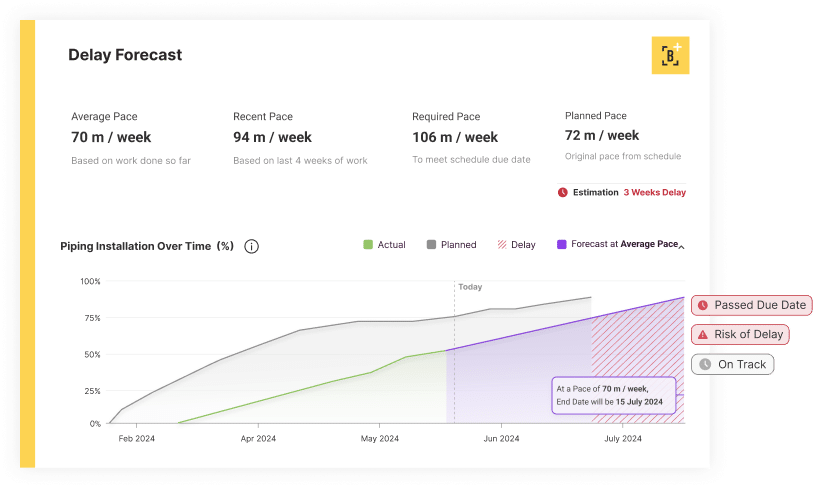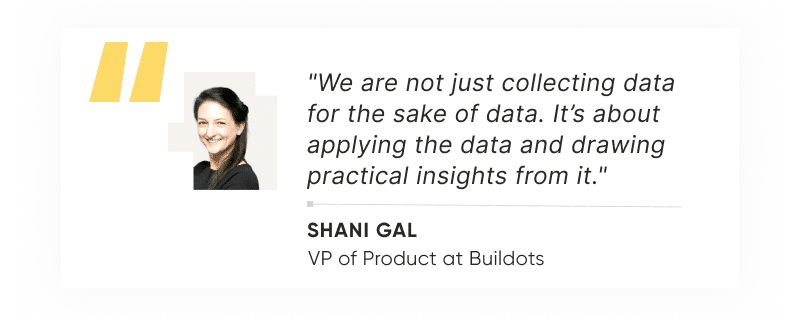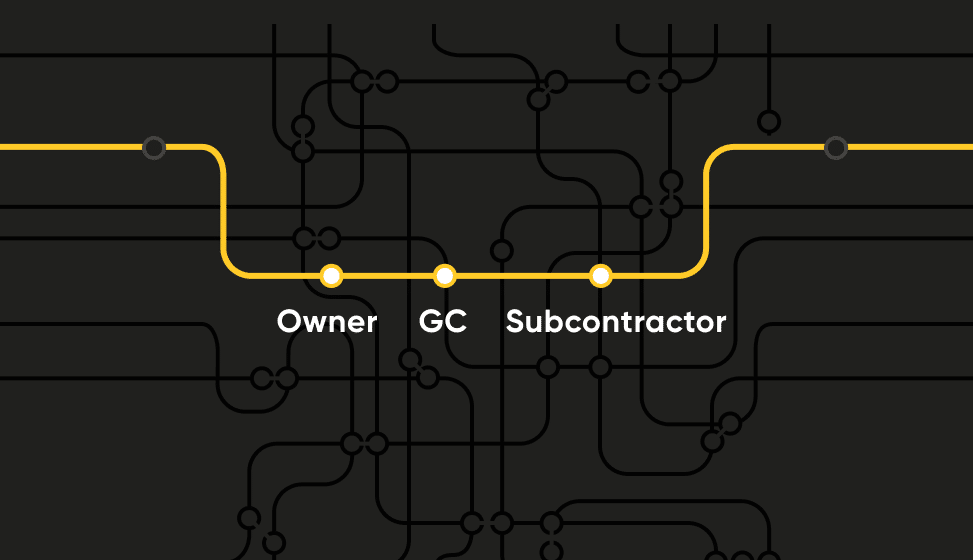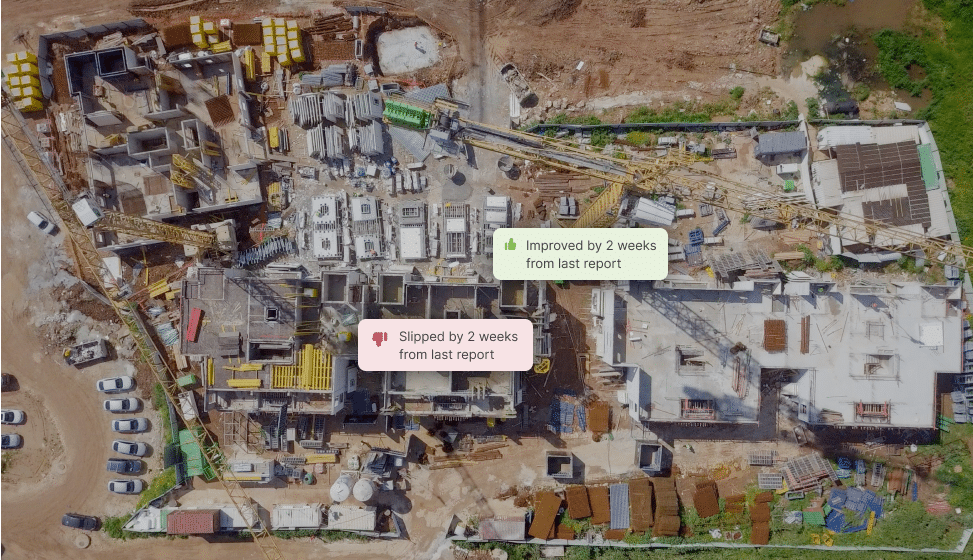Construction Management Cutting construction delays in half: A deep dive into Buildots’ Delay Forecast

How often do delays derail your construction project? Polls from our latest webinar on predictive delay forecasting paint a stark picture: 72% of construction professionals indicated they considered delays a regular occurrence, having affected every single one of their project deliveries so far. Or as Paul Bamforth, Head of Global Strategic Accounts at Buildots, sums it up: “It’s the acceptable norm. We are just going along with it.”
Indeed, delays are a prevalent issue in construction, impacting over 75% of projects with an average setback of 20%. For two-year projects, this translates to a delay of roughly 20 weeks or five months per project. In addition, 62% of all construction activities consistently run slower than planned. Small delays often slip through the cracks until they critically impact the project timeline, and by that time, it’s too late to course-correct. But it doesn’t have to be that way.
What is Buildots' Delay Forecast?
Adopting Buildots' Delay Forecast means embracing a Performance-Driven Construction Management approach to managing projects. The feature applies predictive analytics to anticipate delays by comparing the planned pace, the actual pace, and the required pace of onsite activities. This proactive approach helps identify challenges early, ensuring they do not derail or negatively affect the project timeline. The feature’s key benefits include
- Early Delay Detection: Identifying delay risks as early as four weeks into an activity, transforming unexpected challenges into manageable tasks.
- Proactive Planning: Gauging potential delay lengths for more informed prioritization, ensuring projects stay on track.
- Performance Optimization: Getting strategic recommendations to improve efficiency and output while using the Pace Simulation to optimize mitigation strategies.

A high-risk, data-rich environment
“Using the feature means proactively optimizing performance. It means using all data points and variables available and turning them into actionable strategies,” says Shani Gal, VP of Product at Buildots and one of the key developers behind Buildots’ delay forecasting. “It is important to point out that we are not just collecting data for the sake of data. It’s about applying the data to actually improve processes and draw practical insights from it.”

Equipped with the actionable insights Gal refers to, managers can easily enforce mitigation strategies, e.g., increasing labor, reallocating resources, pausing certain tasks, prioritizing certain floors to regain time lost, and picking up the pace to get ahead of schedule.
When it comes to the latter, Delay Forecast gives teams the power to see estimated completion dates of each activity based on the average past pace, as well as the required pace to hit the agreed deadline. “This is crucial for keeping your trades on track and the project running without disruptions,” states Gal.
“In some cases, the current pace may fit today, but you need to accelerate drastically in the near future to stay on schedule. And do you already know how this is going to impact other activities, trades, end dates, and milestones? Delay Forecast will tell you.”
Not just a theory: Delay Forecast success stories from the field
Delay forecasting isn't just a theoretical concept; it's a results-driven addition to the Buildots platform developed in response to industry needs. The approach has already helped early adopters spot trends in current progress rates and benefit from a 50% reduction in delays. Major companies such as IHP, Multiplex, or NCC are among those who have successfully reduced delay risks, making real-time decisions to optimize resource distribution and project pacing.

Mastering the seemingly insignificant to safeguard timelines
It's about equipping construction managers with the right information at the right moment to keep their projects on track. With predictive analytics and a performance-driven management approach, they can dynamically adjust critical operational factors, using solid numbers to make smarter plans. “The industry is starting to embrace these solutions; we'll see more and more of it,” Shani Gal concluded, adding: “Technology is an enabler; it’s not a solution. No new technology will tell a project manager how to do their job. It’s about understanding how people are already working, how sites are managed, and how tech can support that – not replace it.”

Want to see Delay Forecast in action?
Watch the webinar to view a demo and explore how construction teams are using this tool to cut delays by up to 50%.



